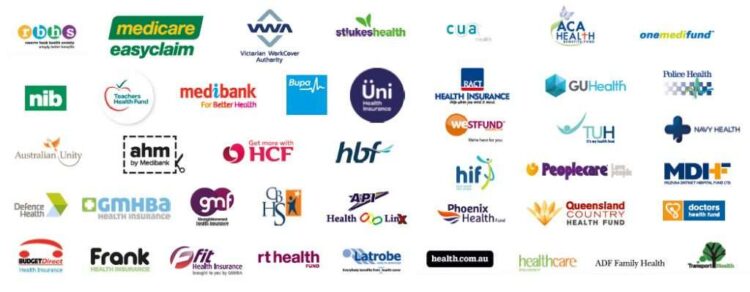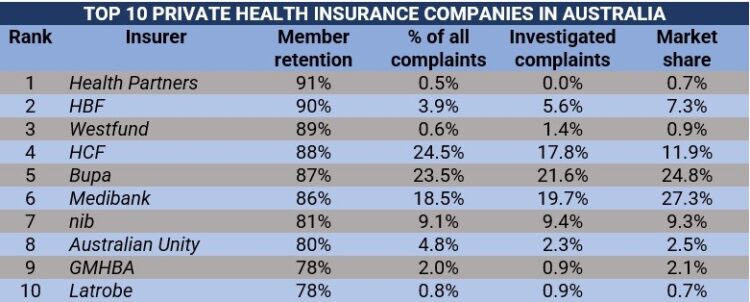
How to buy health insurance can feel overwhelming, but it doesn’t have to be. Navigating the world of premiums, deductibles, and coverage options can be daunting, but understanding the basics is crucial for making informed decisions about your health and finances.
This guide will equip you with the knowledge you need to confidently choose the right health insurance plan for your individual needs. From understanding different plan types to researching providers and comparing quotes, we’ll walk you through each step of the process.
Understanding Your Needs
Choosing the right health insurance plan can feel overwhelming, but it’s crucial for protecting your financial well-being and ensuring access to quality healthcare. By understanding your individual needs and exploring the available options, you can make an informed decision that meets your specific requirements.
Types of Health Insurance Plans
Health insurance plans come in different flavors, each offering a unique blend of coverage and cost. Understanding the key differences between these plans is essential for making the right choice.
- Health Maintenance Organization (HMO): HMOs provide coverage through a network of healthcare providers. You must choose a primary care physician (PCP) within the network who acts as your gatekeeper to specialists. HMOs typically have lower premiums but may require referrals for specialist visits.
- Preferred Provider Organization (PPO): PPOs offer greater flexibility by allowing you to see providers both in and out of their network. However, out-of-network care usually comes with higher costs. PPOs generally have higher premiums than HMOs.
- Point-of-Service (POS): POS plans combine features of both HMOs and PPOs. They offer a network of providers but also allow you to see out-of-network providers with higher costs. POS plans typically have premiums between HMOs and PPOs.
- Exclusive Provider Organization (EPO): EPOs are similar to HMOs but offer a wider network of providers. However, you must stay within the network for coverage. EPOs typically have lower premiums than PPOs.
- High Deductible Health Plan (HDHP): HDHPs have lower premiums but require you to pay a higher deductible before insurance coverage kicks in. They are often paired with a Health Savings Account (HSA), allowing you to save pre-tax dollars for healthcare expenses.
Factors to Consider
Choosing the right health insurance plan involves considering several factors that are unique to your situation.
- Age: Younger individuals may prefer lower-cost plans with higher deductibles, while older individuals may prioritize comprehensive coverage.
- Health Status: Individuals with pre-existing conditions may require plans with broader coverage and lower deductibles.
- Budget: Your budget plays a significant role in determining the type of plan you can afford. Consider premiums, deductibles, co-pays, and out-of-pocket maximums.
- Coverage Needs: Evaluate your healthcare needs, such as prescription drugs, mental health services, and preventive care.
Comparing Health Insurance Plans
Here’s a table summarizing the key features, benefits, and drawbacks of different health insurance plans:
| Plan Type | Key Features | Benefits | Drawbacks |
|---|---|---|---|
| HMO | Network of providers, PCP as gatekeeper, referrals required for specialists | Lower premiums, emphasis on preventive care | Limited provider choice, may require referrals, out-of-network care not covered |
| PPO | Wider network, can see in-network and out-of-network providers, no referrals needed | More flexibility, broader provider choice, out-of-network care covered (at higher cost) | Higher premiums, out-of-network care more expensive |
| POS | Combination of HMO and PPO features, network of providers, out-of-network care allowed | More flexibility than HMO, lower premiums than PPO | May require referrals, out-of-network care more expensive |
| EPO | Wider network than HMO, must stay within network for coverage | Lower premiums than PPO, broader provider choice within network | Limited provider choice, out-of-network care not covered |
| HDHP | Lower premiums, high deductible, HSA option | Lower premiums, tax advantages with HSA | Higher out-of-pocket costs before deductible is met |
Researching Insurance Providers
Once you understand your health insurance needs, it’s time to start researching different providers. This step is crucial as it helps you find a plan that fits your budget, coverage requirements, and overall healthcare preferences.
Comparing Providers
To effectively compare health insurance providers, consider the following tips:
- Utilize Online Comparison Tools: Websites like HealthCare.gov, eHealth, and others offer comprehensive comparisons of plans and providers. These tools allow you to filter plans based on your specific needs and preferences.
- Check Provider Networks: Ensure that your preferred doctors and hospitals are included in the provider’s network. Out-of-network care can be significantly more expensive.
- Compare Premiums and Deductibles: Carefully analyze the monthly premiums and deductibles offered by different providers. Consider your budget and the potential for higher out-of-pocket expenses.
- Review Coverage Details: Pay close attention to the specific benefits and exclusions covered by each plan. This includes essential healthcare services, prescription drugs, and preventive care.
- Read Customer Reviews and Ratings: Online platforms like the Better Business Bureau (BBB) and consumer review websites provide valuable insights into customer satisfaction and provider performance.
Assessing Provider Financial Stability
Financial stability is a crucial factor to consider when choosing a health insurance provider. A financially sound provider is more likely to remain in business and continue offering coverage.
- Check the Provider’s Financial Ratings: Organizations like AM Best and Standard & Poor’s provide financial ratings for insurance companies. Look for providers with strong ratings, indicating financial stability and a lower risk of insolvency.
- Research the Provider’s Claims Payment History: A provider with a history of timely and accurate claims payments is more likely to meet your needs in the event of a medical emergency or illness.
Reputable Health Insurance Providers
The following table lists some reputable health insurance providers in the United States, along with their key features and contact information.
| Provider | Key Features | Contact Information |
|---|---|---|
| Anthem | National coverage, strong network, diverse plan options | (800) 441-7441 |
| Blue Cross Blue Shield | Wide network, comprehensive plans, local presence | (800) 424-BLUE |
| Cigna | Global coverage, innovative health solutions, digital tools | (800) 244-6224 |
| Humana | Medicare and Medicaid plans, focus on wellness and prevention | (800) 448-6262 |
| UnitedHealthcare | Largest health insurer in the US, extensive network, various plan types | (800) 448-6262 |
Getting Quotes and Comparing Plans

Now that you understand your health insurance needs and have researched potential providers, it’s time to get quotes and compare plans. This step is crucial for finding the best value for your money.
Getting Quotes
To get quotes, you can contact insurance providers directly, use online comparison tools, or work with an insurance broker. Each method has its advantages and disadvantages.
- Contacting Providers Directly: You can visit their websites, call their customer service lines, or schedule appointments with agents. This allows for personalized consultations and a deeper understanding of specific plan details. However, it can be time-consuming to contact multiple providers.
- Using Online Comparison Tools: Many websites allow you to enter your information and receive quotes from various insurance companies simultaneously. This is a quick and convenient way to compare plans side-by-side. However, the information provided may be limited, and you might not have access to personalized advice.
- Working with an Insurance Broker: Brokers act as intermediaries, helping you navigate the insurance market. They can provide personalized recommendations, compare plans from multiple providers, and assist with the application process. However, brokers typically charge a fee for their services.
Comparing Quotes
Once you have received quotes from different insurance providers, you need to compare them carefully. Here are some key factors to consider:
- Premiums: This is the monthly cost of your health insurance. Compare premiums across different plans to find the most affordable option.
- Deductibles: This is the amount you need to pay out-of-pocket before your insurance starts covering medical expenses. A higher deductible generally means a lower premium, but you will need to pay more upfront for medical care.
- Copayments: These are fixed amounts you pay for specific services, such as doctor visits or prescription drugs. Compare copayments for common services to see which plan offers the most favorable costs.
- Coverage Details: Carefully review the coverage details of each plan. This includes the types of services covered, the network of doctors and hospitals, and any limitations or exclusions.
Using Online Tools to Compare Plans
Online comparison tools can simplify the process of comparing health insurance plans. Here’s a step-by-step guide:
- Choose a reputable comparison website: There are many websites available, but it’s essential to select one that is trusted and provides accurate information. Look for websites with good reviews and a user-friendly interface.
- Enter your information: You’ll need to provide basic information, such as your age, location, and desired coverage level.
- Compare quotes: The website will display quotes from different insurance providers based on your criteria. You can sort and filter the results to find plans that meet your specific needs.
- Review plan details: Click on each plan to access detailed information, including premiums, deductibles, copayments, and coverage details.
- Contact providers: If you find a plan that interests you, you can contact the provider directly to discuss your options and get personalized advice.
Understanding Coverage Details

Now that you’ve researched and compared insurance plans, it’s time to delve deeper into the details of each plan’s coverage. Understanding the specific terms and limitations of each plan is crucial for making an informed decision that aligns with your health needs and budget.
Key Terms
Several key terms are used to describe the financial aspects of health insurance coverage. Understanding these terms is essential for comprehending your financial responsibilities when seeking healthcare services.
- Deductible: The amount you pay out-of-pocket for healthcare services before your insurance coverage kicks in. For example, if your deductible is $1,000, you’ll need to pay the first $1,000 of your healthcare expenses yourself before your insurance starts covering the remaining costs.
- Copayment: A fixed amount you pay for a specific service, such as a doctor’s visit or prescription drug. Copayments are typically a smaller amount than deductibles and are paid at the time of service.
- Coinsurance: A percentage of the cost of healthcare services that you pay after your deductible has been met. For instance, if your coinsurance is 20%, you’ll pay 20% of the cost of your healthcare services after your deductible is met, and your insurance will cover the remaining 80%.
- Out-of-Pocket Maximum: The maximum amount you’ll pay out-of-pocket for healthcare services in a given year. Once you reach your out-of-pocket maximum, your insurance will cover 100% of the remaining healthcare costs for the rest of the year.
Coverage Types
Health insurance plans offer different types of coverage, catering to various healthcare needs. Here’s a breakdown of common coverage types:
| Coverage Type | Description |
|---|---|
| Hospitalization | Covers costs associated with inpatient hospital stays, including room and board, nursing care, and medical supplies. |
| Surgery | Covers costs related to surgical procedures, including the surgeon’s fees, anesthesia, and operating room charges. |
| Preventive Care | Covers routine preventive services like vaccinations, screenings, and checkups. These services are often covered at 100% with no deductible or copayment. |
| Prescription Drugs | Covers the cost of prescription medications, although there may be restrictions on specific drugs or tiers of coverage. |
| Mental Health and Substance Use Disorder Services | Covers treatment for mental health conditions and substance use disorders, often subject to specific limitations or requirements. |
Coverage Limitations and Exclusions
It’s crucial to understand that health insurance plans have limitations and exclusions. These are specific services or conditions that are not covered by the plan. For example, some plans may exclude coverage for pre-existing conditions or experimental treatments. It’s essential to carefully review the plan’s coverage details to identify any limitations or exclusions that might impact your healthcare needs.
“Always read the fine print and ask questions about any unclear terms or conditions before enrolling in a health insurance plan.”
Enrolling in a Plan: How To Buy Health Insurance
Once you’ve compared quotes and chosen a health insurance plan that meets your needs, it’s time to enroll. The enrollment process involves several steps, and it’s crucial to understand the different enrollment periods and how to complete the application accurately.
Enrollment Process
The enrollment process for health insurance plans typically involves the following steps:
- Choose a Plan: You’ve already done this step by comparing quotes and selecting the plan that best suits your needs and budget.
- Complete the Application: You’ll need to provide personal information, including your name, address, Social Security number, and any dependents you want to cover. You’ll also need to answer questions about your health history and current medical conditions. Be sure to review your application carefully before submitting it.
- Pay Your Premium: Once your application is approved, you’ll need to pay your first premium. The premium is the monthly fee you pay for your health insurance coverage. You can usually pay your premium online, by mail, or by phone.
- Receive Your Insurance Card: After you’ve paid your premium, you’ll receive your insurance card in the mail. This card will have your policy number and other important information. Keep it in a safe place and present it to your healthcare providers when you need medical services.
Open Enrollment Period
The open enrollment period is the time of year when you can enroll in or change your health insurance plan without a special reason. This period typically lasts for a few weeks in the fall. If you miss the open enrollment period, you’ll need to wait until the next one to enroll in a new plan.
- Open Enrollment Period for 2024: November 1, 2023, to January 15, 2024.
Special Enrollment Periods, How to buy health insurance
Special enrollment periods allow you to enroll in or change your health insurance plan outside of the open enrollment period. These periods are available for specific life events, such as:
- Getting married or divorced
- Having a baby or adopting a child
- Losing your job or changing employers
- Moving to a new state
- Turning 65 years old
Tips for Completing the Enrollment Application
To ensure you complete your enrollment application accurately and efficiently, follow these tips:
- Gather all necessary information: This includes your Social Security number, birthdate, address, and contact information for all dependents you want to cover. You’ll also need to have information about your current health status and any pre-existing conditions.
- Read the application carefully: Make sure you understand all the questions and provide accurate information. If you’re unsure about something, contact the insurance provider for clarification.
- Double-check your information: Before submitting your application, review it carefully to ensure all information is correct. Mistakes can delay your enrollment and cause issues later on.
- Keep a copy of your application: It’s a good idea to keep a copy of your application for your records. This will help you track the status of your enrollment and provide documentation if you need it in the future.
Managing Your Health Insurance
Now that you’ve chosen a health insurance plan, it’s time to learn how to manage it effectively. This includes understanding your policy, staying organized, and knowing how to handle claims.
Keeping Your Contact Information Updated
It’s crucial to keep your insurance company informed of any changes to your contact information. This includes your address, phone number, and email address. Failure to update your information could result in delays in receiving important policy updates, claim approvals, or even premium notices.
Closure

By taking the time to research and compare options, you can secure a health insurance plan that provides adequate coverage at a price you can afford. Remember, having the right health insurance is an investment in your well-being and financial security.
Frequently Asked Questions
What is the open enrollment period?
The open enrollment period is a specific time frame when you can enroll in or change health insurance plans without a qualifying life event. It typically occurs annually, but dates may vary depending on your state and insurance provider.
What is a deductible?
A deductible is the amount of money you pay out-of-pocket for covered healthcare services before your insurance plan starts paying. For example, if your deductible is $1,000, you’ll pay the first $1,000 of medical expenses yourself before your insurance kicks in.
What is a copayment?
A copayment is a fixed amount you pay for a specific healthcare service, such as a doctor’s visit or prescription medication. Copayments are typically a smaller amount than deductibles and are usually paid at the time of service.
What is coinsurance?
Coinsurance is a percentage of the cost of a covered healthcare service that you pay after you’ve met your deductible. For example, if your coinsurance is 20%, you’ll pay 20% of the cost of a service after you’ve met your deductible.
What is an out-of-pocket maximum?
An out-of-pocket maximum is the most you’ll have to pay for covered healthcare services in a year. Once you reach your out-of-pocket maximum, your insurance plan will cover 100% of the remaining costs for the rest of the year.





